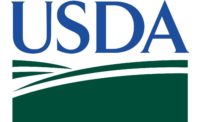FSIS is implementing changes to its sampling programs for fiscal year (FY) 2024, starting Oct. 1. After reviewing the sampling and testing programs, as it does each year, FSIS has made targeted changes that more effectively utilize agency resources without impacting food safety. FSIS evaluates the effectiveness of its sampling programs to ensure they are meaningful to public health protection and will provide the best available science and data to inform agency decisions.
FSIS released a detailed list of these changes on Sept. 29 in its Fiscal Year Sampling Plan, which is posted on the agency’s website.
Visit the FSIS website for more information on FSIS’ sampling programs.
FSIS to post FY 2021 and FY 2022 exploratory PFAS sampling data
FSIS is posting exploratory sampling data for FY 2021 and FY 2022 for per- and polyfluoroalkyl substances (PFAS) in U.S. domestic and imported meat and poultry products. The PFAS data for FY 2021 and FY 2022 is being posted retroactively; the quarterly sampling data for PFAS for FY 2023 Q1-Q3 is already on the FSIS website as part of the National Residue Program Quarterly Reports. FSIS expanded PFAS testing, as described in the Sept. 25, 2020, Constituent Update. That is a part of FSIS’ continued efforts to understand and characterize potential contaminants in the food supply.
The FSIS PFAS method can screen, confirm and quantify 16 PFAS compounds in meat and poultry products. Since starting on Oct. 1, 2020, FSIS tested a total of 3,199 meat and poultry samples (1,919 bovine, 730 swine and 550 chicken), finding less than 0.1% (two bovine) samples positive for perfluorooctanoic sulfonic acid (PFOS). FSIS tested 616 Siluriformes fish samples, finding 83 samples positive for PFOS (82 wild-caught samples and one farm-raised sample).
PFAS residue datasets are being released quarterly. To access these datasets or view more information about them, visit the Chemical Residues and Contaminants page.
Further information on the testing method for PFAS analytes, titled “Screening, Determination, and Confirmation of PFAS by UPLC-MS-MS,” can be found on the FSIS website. Direct questions regarding specific elements of the method to AskFSIS.
Available for public comment
FSIS seeks public comments on proposed rules and notices, which are viewable on the FSIS "Federal Register" & Rulemaking webpage. FSIS is currently seeking comments until Nov. 27, 2023, on Notice of Request to Renew an Approved Information Collection: Egg Products Hazard Analysis and Critical Control Point and Sanitation Standard Operating Procedures.
Policy update
FSIS notices and directives on public health and regulatory issues are available on the FSIS Policy webpage. The following policy update was recently issued:
- FSIS Notice 50-23 - Emergency Dependent Care Program Eligibility and Visits
- FSIS Notice 49-23 - Leave Bank Program 2023 Open Enrollment Period for the 2024 Leave Year
- FSIS Directive 5420.1 - Food Defense Tasks and Threat Notification Response Procedures for the Office of Field Operations - Revision 11
Export requirements update
The Library of Export Requirements has been updated for products for the following:
- Mexico.
- Brazil.
- Indonesia.
- Australia.
- Taiwan.
- Senegal.
- French Polynesia (Tahiti).
- United Arab Emirates.
- Jordan.
- Namibia.
Complete information is available at the FSIS Import & Export Library.
Source: USDA's FSIS
.jpg?1709305512)


Report Abusive Comment